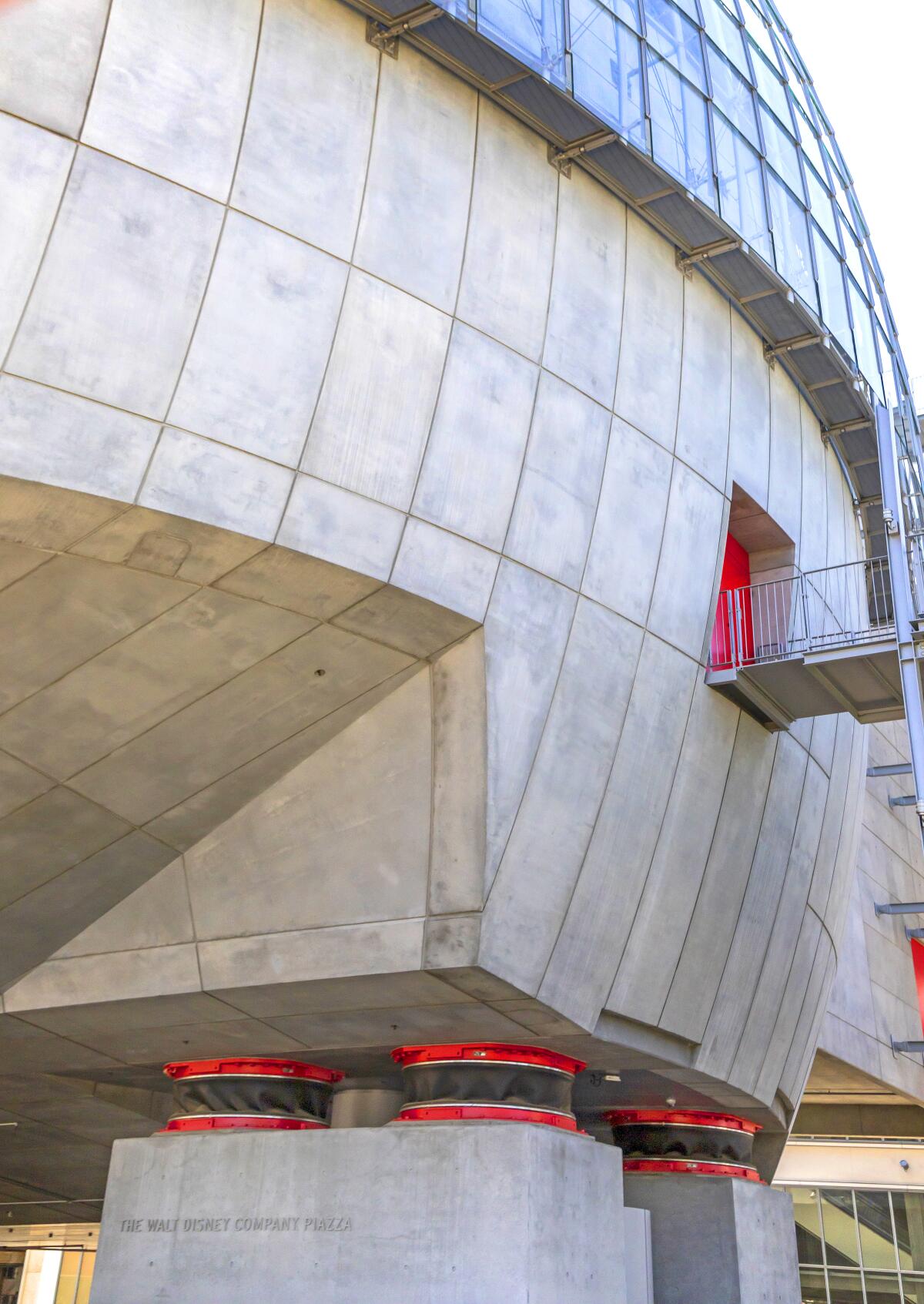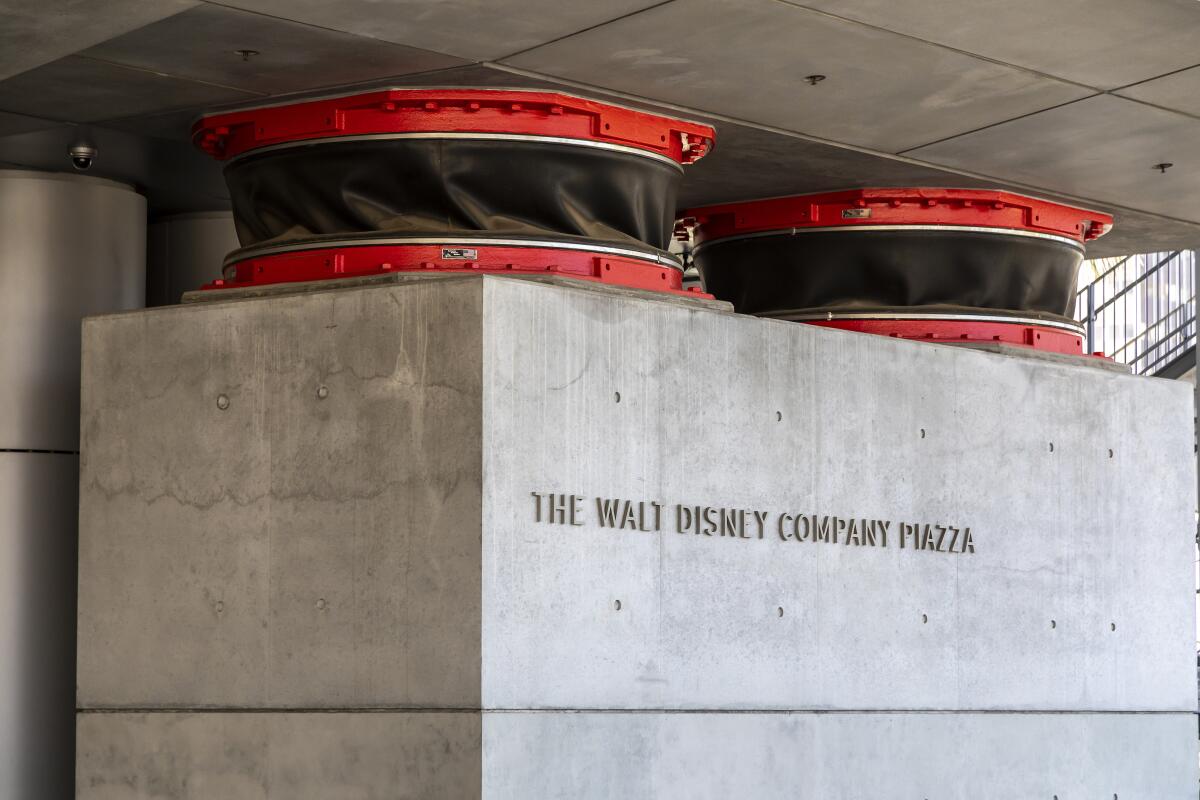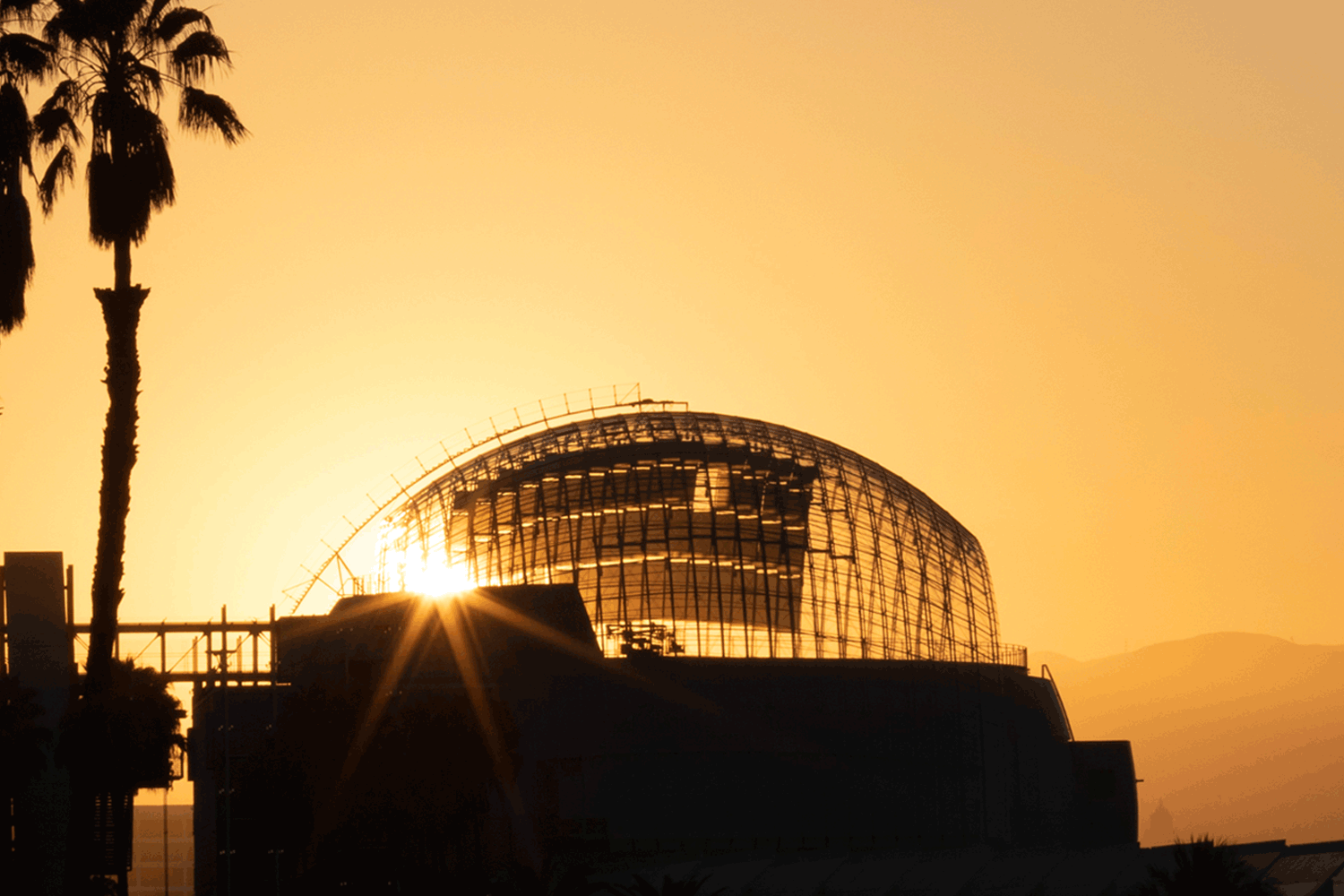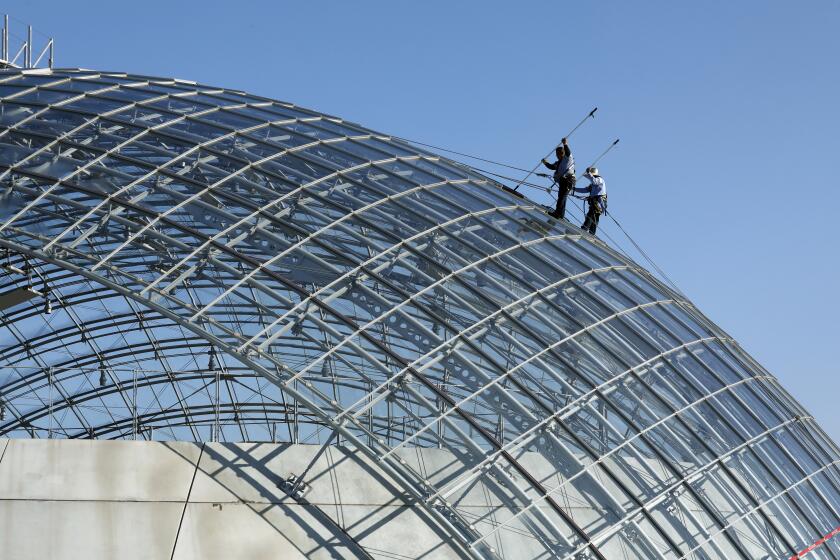What prevents the Academy Museum from falling in a quake? The answer is hidden in plain view

If the Academy Museum of Motion Pictures building were a band, its futuristic-looking glass sphere would be the electric guitar — up front, in your face, hogging the spotlight. Its 60-foot-high gold-leaf cylinder on the southwest corner might be the keyboard, adding sparkle and pop to the overall mix.
Its base isolators? The bass guitar — laying low at ground level, but providing steadiness and support, especially when the music gets … rocking.
Base isolators steady a building during an earthquake. Typically, they’re unsexy-looking architectural components, hidden deep within the building’s infrastructure and out of view. But at the Academy Museum, they’re featured prominently in architect Renzo Piano’s design. They sit in a public piazza beneath Piano’s giant spherical theater — eight squat, industrial-looking steel structures, a few feet tall, sheathed in black vinyl accented with red paint amid otherwise monochromatic concrete.
They’ll no doubt stir curiosity while quietly belying the critical role they play.
Architect Daniel Hammerman, of Renzo Piano Building Workshop, put it simply in this edited conversation: “With the base isolators, the idea is: The ground moves and the building doesn’t.”
Here’s Hammerman’s primer on those peculiar-looking, unsung heroes of the building.
What are base isolators and why are they important?
They isolate the building from the base, literally. So when the ground shakes during an earthquake — the tectonic plates are moving laterally and normally a building absorbs that seismic energy and does a little dance — the base isolator becomes basically a shock absorber. So allowing the earth to move to a large degree without transmitting that seismic energy up to the building.

How do they work at the Academy Museum?
The sphere itself sits on four concrete plinths, two on each side, and each one of those plinths has two base isolators. Within those base isolators are interlocking, nested, stainless steel discs. They have a slight curvature, one inside the other. And as the building shifts in any direction, the discs slide relative to each other and they can kind of stack, add and offset, kind of like a staircase.
How do you protect them from the outdoor elements?
They’re all made of stainless steel, so supremely hard, noncorrosive, incredible material. It’s all gasketed around. There’s a vinyl enclosure to this assembly, so you aren’t collecting dust and they’re protected from corrosion and UV.
How much seismic protection do they actually provide?
They can sustain up to 30 inches of differential displacement — meaning the ground can move up to 30 inches — and it can absorb all that difference before the building starts to feel anything or move.
The Academy Museum of Motion Pictures has opened as the ultimate celebration of Hollywood history, Oscar lore and today’s movie makers.
They’re usually hidden from view?
Yes. L.A. City Hall, when they renovated that a few years ago, they put in base isolators, a ton of them, in the basement. Same thing on the Apple campus in Cupertino, Calif., that was built a few years ago — that has like 300 base isolators under the whole thing. And no one would ever know.
So why the decision to make them so visible?
We wanted to celebrate them. This building kind of floats above the ground and it celebrates the levitation of the building too. We actually wanted to not have the gasketing, so you could see the metal bearing [inside], but that was decided to be not very responsible, so they are fully concealed and protected.
In general, the ethos of Renzo Piano Building Workshop is always to celebrate how buildings work, how they’re made, to make visible the tectonics, which is to say how the building is built, how it comes together, how it performs. And we love to celebrate every joint, every detail, every assembly. This is just one example of that.
Specialized crews make like Spider-Man to clean 1,500 glass panels high in the sky. Their tricks? Start with deionized water.
More to Read
The biggest entertainment stories
Get our big stories about Hollywood, film, television, music, arts, culture and more right in your inbox as soon as they publish.
You may occasionally receive promotional content from the Los Angeles Times.













